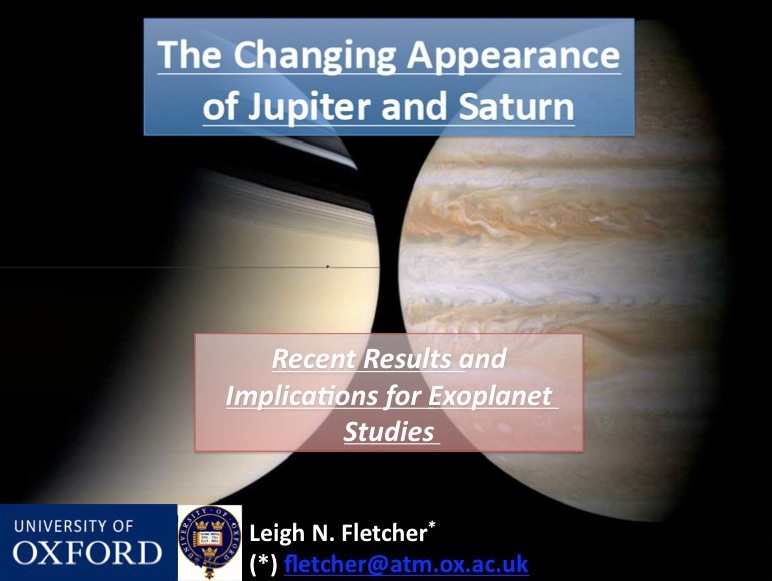Comparative planetology > Leigh Fletcher
The changing appearance
of Jupiter and Saturn
Leigh Fletcher
University of Oxford, UK
of Jupiter and Saturn
Leigh Fletcher
University of Oxford, UK



Abstract: Despite decades of intense research and observation, our understanding of the physics and chemistry of the giant planets of our solar system remains incomplete. And yet the origins, evolution, dynamics and composition of Jupiter and Saturn serve as the paradigm for the interpretation of exoplanetary spectra. This presentation will review recent studies of temporally evolving phenomena on a range of timescales, from hours to decades, observed by Galileo, Cassini, New Horizons and ground-based telescopes. These include (a) the global upheavals of Jupiter's banded appearance on quasi-periodic timescales and the recent ‘fading’ of the Southern Equatorial Belt; (b) the rate of asteroidal/cometary impacts and their effect on the atmospheric composition; (c) the polar vortices of both Jupiter and Saturn and their seasonal variability; and (d) the continuing evolution of Jupiter's giant anticyclones (reddening, strengthening and interactions). These are examples of the range of variability we detect in our own solar system through spatially-resolved observations. Depending on the observational geometry, such large-scale phenomena could lead to substantial variations in the disc- averaged spectra of exoplanets.
Additional materials: PDF of slides
ExoClimes 2010, Exeter, Tuesday 7th Sep 2010
Additional materials: PDF of slides
ExoClimes 2010, Exeter, Tuesday 7th Sep 2010
